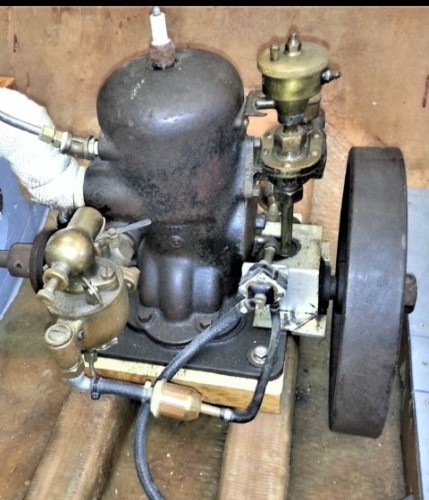|
| Author |
Message |
    
narrabay2
Senior Member
Username: narrabay2
Post Number: 230
Registered: 10-2019
| | Posted on Sunday, January 09, 2022 - 05:43 pm: | 




|
well we have a cold snap coming (5f) so I tested the antifreeze in the YT and it was -5f but just to be safe, I drained the YT and heat exchanger and pumped in brand new 50/50 universal antifreeze (-34f).
same for the Gray 3hp which is in unheated storage. The cooling water port on the Gray I noticed does not seem to be on the top of the cylinder, so I wonder if there is water jacket above it or not and if so, is there an air bubble up there by design?
The YT cooling outlet is on top of the cyl head so any air would come out and the water jacket would be fully flooded.
 |
    
miro
Senior Member
Username: miro
Post Number: 1175
Registered: 11-2001

| | Posted on Wednesday, January 12, 2022 - 11:26 am: | 




|
Yes there is a "bubble" at the top of the cylinder, but it does empty out when the engine is running.
But there is water left in the water jacket which prevents over heating the next time the engine is run.
The drain at the bottom of the water jacket drains all the water out for winterizing. I normally do not fill up my engines with antifreeze - there's no point to doing that in my neck of the (northern) woods.
About the only time I'd consider filling with antifreeze is for long term storage of a slat water engine to prevent the cylinder from drying out and suffering the salt cracking effect.
miro |
    
narrabay2
Senior Member
Username: narrabay2
Post Number: 234
Registered: 10-2019
| | Posted on Wednesday, January 12, 2022 - 05:21 pm: | 




|
"About the only time I'd consider filling with antifreeze is for long term storage of a salt water engine to prevent the cylinder from drying out and suffering the salt cracking effect."
Hi Miro, that's actually the main reason for this, and, the main reason for my concern about the air pocket - its not protected from its prior salt exposure. |
    
ernie
Senior Member
Username: ernie
Post Number: 2672
Registered: 01-2002

| | Posted on Thursday, January 13, 2022 - 07:48 pm: | 




|
Chris,
That engine does not have any where enough hours in salt water to matter. It is long time exposure to salt that is dangerous.
Ernie |
|
|
|


|


